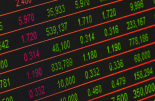NN IP: The smell of stagflation
NN IP: The smell of stagflation

Inflation, monetary policy and geopolitical risk will remain dominant themes in the second quarter. We are neutral in our top-down allocation.
The first quarter was characterized by three factors that we think will remain dominant in the second quarter. The first one is the continuous rise in US and European inflation numbers to levels not seen in decades. The drivers are linked to soaring commodity prices, supply chain disruptions, higher housing costs and the economic re-opening, which is creating an imbalance between supply and demand for certain goods and services. So far, long-term inflation expectations remain anchored.
The second factor is that central banks, especially the US Federal Reserve, want to keep these expectations well-anchored and have embarked on a tightening cycle. For the US, we now expect policy rates to rise to 2.5% this year and a shrinking of the balance sheet. Elsewhere we expect central banks to tighten further, although to a lesser extent. Japan appears to be the exception, but it does not have a similar inflation problem.
Not surprisingly, bond markets are under pressure. Bond yields are sharply up, even in the wake of the third factor: higher geopolitical risks. Soaring commodity prices are the result; they will impact consumers’ purchasing power as well as corporate confidence. Europe is most vulnerable, given its energy dependency. Meanwhile, rising food prices may cause unrest in emerging markets.
The combination of all these elements increases the risk of stagflation. Growth is most at risk in the Eurozone, while in the US, high inflation may be the biggest worry. This type of environment offers few places to hide. Commodities is one option, and in the course of Q1 we were overweight in this asset class. Due the rising volatility in commodities, however, we downscaled our exposure back to neutral. In the short term, commodities look too dependent on the geopolitical news headlines.
In addition to commodities, real estate and equities offer some protection against inflation. The former is vulnerable to higher (real) bond yields, however, and the latter to earnings downgrades. Fixed income looks to be the worst place to be. We expect further upward pressure on government bond yields as well as upward pressure on fixed income spreads.
Not everything is gloomy. Fortunately, we entered this tumultuous period with strong fundamentals. Economies outside of Asia are re-opening as mobility restrictions are lifted. This is reflected in the strength of the leading economic indicators and the economic surprises. As the next earnings season approaches, we should keep in mind that corporates were getting more constructive on supply chains in the last quarter’s filings.
Figure 1 shows the overall net sentiment in Q4 2021 and Q4 2020 corporate filings on the topic of supply chains. Even though these data do not capture the impact of the Russian invasion of Ukraine, they still show that companies were getting more constructive on supply chain issues at the beginning of the year, before the war broke out.

Corporate and household finances are also healthy. On the corporate side this means strong balance sheets and good cash flows, which are tailwinds for investments and payouts to shareholders. For consumers, it means excess savings and more resilience against potential economic headwinds.
There will also be a lot of focus on political events. French voters go to the ballot box this month to choose a president. Emmanuel Macron is leading in the polls, although by a narrowing margin. Currently the question seems to be who will be the contender in the second round: a candidate from the far-right, or one from the far left? The real challenge for Macron’s party may be the parliamentary elections later this year. In the US, November will bring the midterm elections.
On the geopolitical front, the Russian invasion of Ukraine will dominate headlines, and the US-China relationship will merit close monitoring.
Equities
We are neutral on global equities. The fundamental signal is neutral, but the market dynamics data remain negative. On the other hand, investor sentiment is weak and positioning is low. These are important arguments for not overreacting and downgrading equities. In the medium term, we see equities as one of the few asset classes that has the potential to offer a positive return for this year.
Within equities we keep the twin themes of rising bond yields and rising cyclical commodity prices, and we add a defensive flavour. We are overweighting financials and materials, and we hold an overweight in consumer staples and health care to reduce the cyclical risk. Finally, we keep our underweight in communication services.
Regionally we downgraded the Eurozone to underweight, given its higher vulnerability to the developments in Ukraine. We upgraded Japan to a moderate overweight on a weak yen, monetary policy divergence and an attractive risk premium.
Fixed income
As we headed towards the end of the quarter and took into account the strong moves in the bond market, we closed most of our active fixed interest calls. We keep a position in a US 30y-02yr flattener. The talk of raising the federal funds target rate above the neutral rate to combat inflation allows for more upside in the short end of the curve.
At the same time, the 30y UST rate has been stickier than the rest of the curve. Institutional buying interest should concentrate in the long end. Any doubts about the growth outlook in the current high-inflation world could also weigh on the 30y part of the curve.
Among the other non-standard calls, we hold on to our overweight in 10yr Chinese bonds. The People’s Bank of China is on an easing bias and will not change its stance anytime soon.
In credits we closed our underweights in euro investment grade and euro high yield.
Real estate
We closed the underweight in real estate, although we maintain the position for the medium term. We closed the position from a risk perspective as investor inflows returned to global real estate. Real estate is currently trading as defensive, despite the headwind of rising yields as main central banks turn more hawkish. US real estate outperformed recently, perhaps in part because investors were already strong underweight. The same holds for global real estate, where positioning is strong underweight, as opposed to still overweight in European real estate.
For the medium term, we keep the underweight, mainly on the basis of the valuation and earnings outlook. Valuation versus corporate bond yields is unattractive. REIT heavyweights Prologis and American Tower are trading at high P/E ratios, and with high leverage. This year’s expected earnings growth for global real estate has declined recently to -3% with US earnings growth 2022 as low as -18%. Global real estate dividends are expected to rise 8% this year. Rent indexation on inflation offers some protection, and an economy trending towards normalization will support real estate demand at large.
Eurozone credit standards for housing eased in the first quarter of the year, as did credit standards for commercial real estate in the US. Nevertheless, we anticipate credit standards to tighten and become a headwind for the asset class. US housing and labour data are on the mend, but bottlenecks remain due to shortages of labour and building materials.
The Covid crisis has amplified the ongoing structural changes in real estate. The trend to e-commerce reduces demand for retail real estate and strengthens real estate logistics. Meanwhile, increased working-from-home will continue to affect office demand. These themes will continue to weigh on the asset class.
Commodities
We locked in profit by closing the commodities overweight. The geopolitical premium began deflating in the second week of March as hopes for the brokerage of a deal between Russia and Ukraine increased. When no end of the war appeared in sight, the geopolitical premium was revived.
The cyclical commodity demand outlook will come more in focus as high commodity prices and supply chain disruptions damp the growth outlook, in particular in Europe. Rising virus cases and possible lockdowns in China also pose a challenge to the country’s near-term growth outlook. In line with these cyclical concerns we also closed the overweight in copper despite expected Chinese policy stimulus and still-low inventories.
Precious metals are torn between safe-haven and jewellery demand on the one hand, which is currently dominant amid geopolitical tensions, and a Fed-driven outlook for rising yields and a stronger US dollar on the other hand.
We closed the overweight in palladium after a strong rally and with a lofty geopolitical premium in the metal. We moved aluminium to overweight. Aluminium inventories in China and at LME are low, while supply disruption risks remain high. Russian aluminium production, which makes up 6% of global supply, is particularly at risk with the recent banning of alumina and bauxite shipments from Australia to Russia, representing some 20% of Russia’s alumina imports.
Crude oil prices are volatile due to geopolitical tensions, solid demand and low inventories. Chinese lockdowns will negatively impact demand; Russian and European oil demand will also adjust downward. Meanwhile, the likelihood of a new nuclear deal with Iran and a return of Iranian production increased. This, combined with supply growth from OPEC+ and elsewhere, should move the oil market to a surplus in the next several months, barring drastic sanctions on Russian oil exports to Europe, which we consider unlikely.









